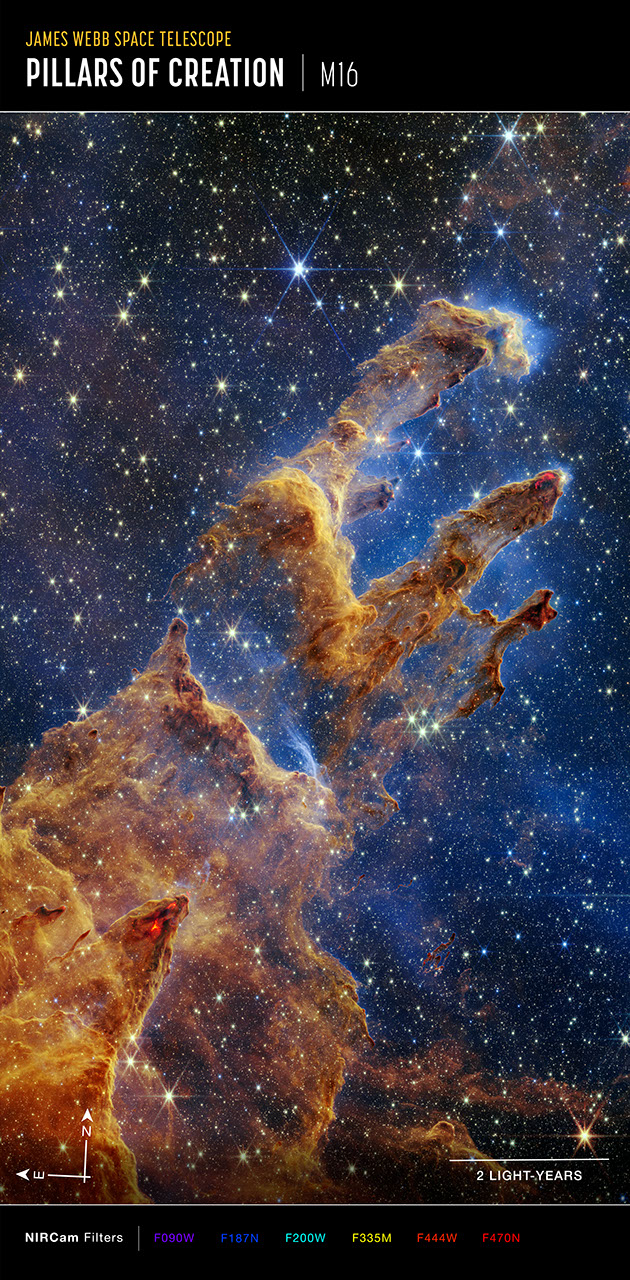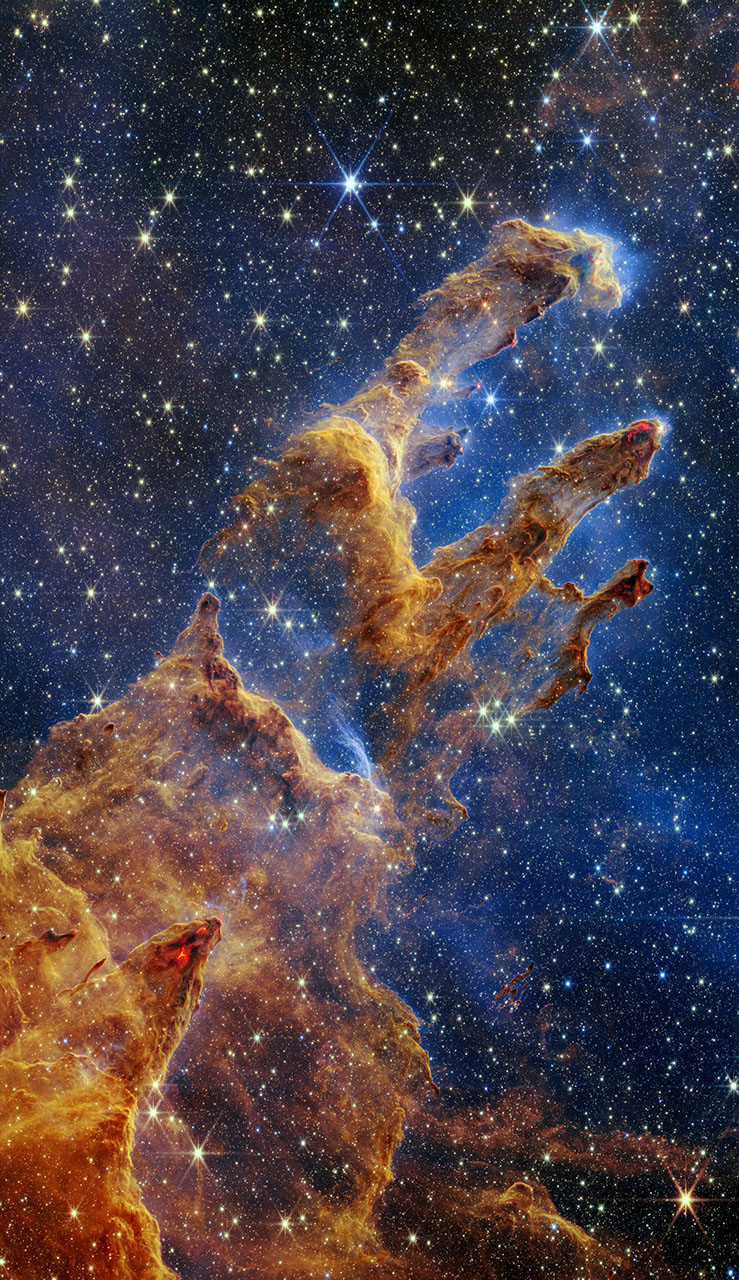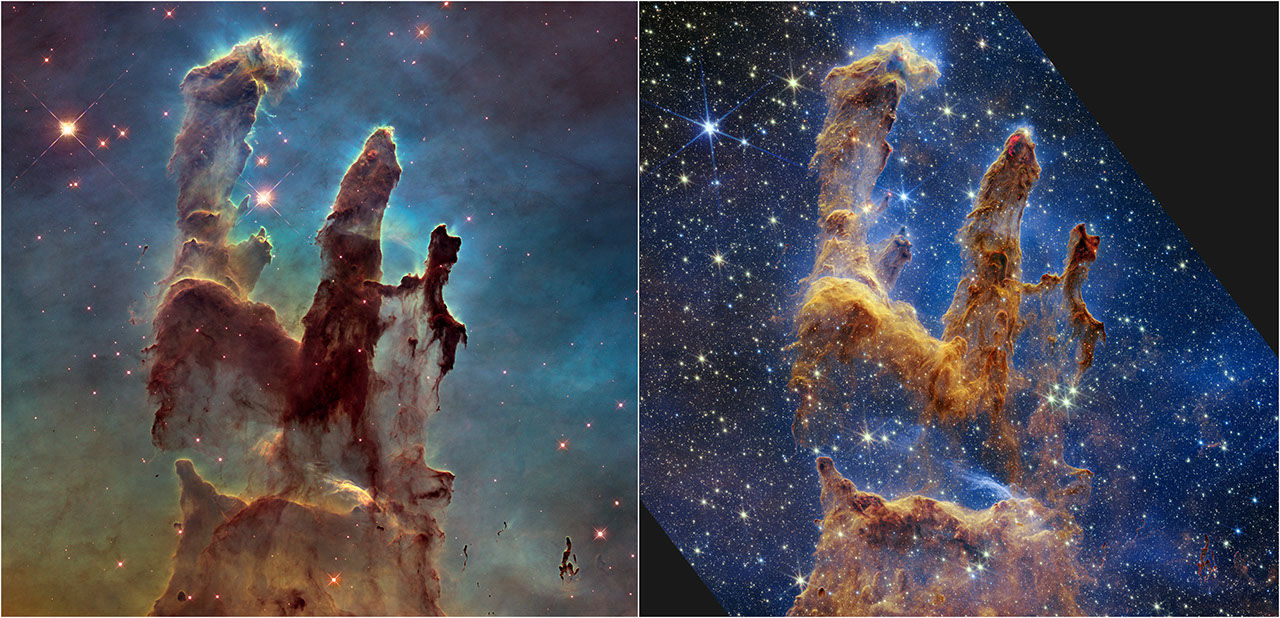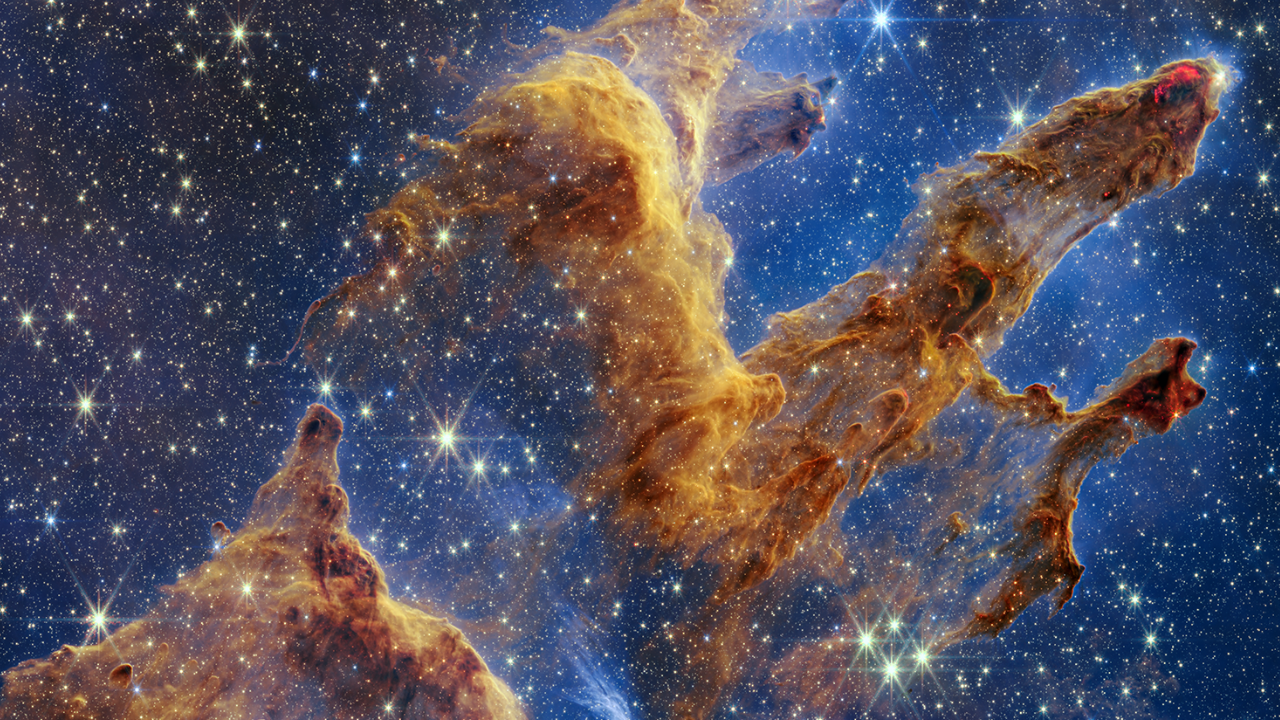1 min read
Pillars of Creation (NIRCam Compass Image)

This image of the Pillars of Creation, captured by Webb’s Near-Infrared Camera (NIRCam), shows compass arrows, scale bar, and color key for reference. It lies within the Eagle Nebula, which is also known as Messier 16 (M16).
The north and east compass arrows show the orientation of the image on the sky. Note that the relationship between north and east on the sky (as seen from below) is flipped relative to direction arrows on a map of the ground (as seen from above).
The scale bar is labeled in light-years, which is the distance that light travels in one Earth-year. (It takes 2 years for light to travel a distance equal to the length of the scale bar.) One light-year is equal to about 5.88 trillion miles or 9.46 trillion kilometers. The field of view shown in this image is approximately 8 light-years across.
This image shows near-infrared wavelengths of light that have been translated into visible-light colors. The color key shows which NIRCam filters were used when collecting the light. The color of each filter name is the visible light color used to represent the infrared light that passes through that filter.
About the Object
- R.A. PositionR.A. PositionRight ascension – analogous to longitude – is one component of an object's position.18:18:48.17
- Dec. PositionDec. PositionDeclination – analogous to latitude – is one component of an object's position.-13:48:26.03
- ConstellationConstellationOne of 88 recognized regions of the celestial sphere in which the object appears.Serpens
- DistanceDistanceThe physical distance from Earth to the astronomical object. Distances within our solar system are usually measured in Astronomical Units (AU). Distances between stars are usually measured in light-years. Interstellar distances can also be measured in parsecs.6,500 light-years (2,000 parsecs)
- DimensionsDimensionsThe physical size of the object or the apparent angle it subtends on the sky.Image is approximately 8 light-years across.
About the Data
- Data DescriptionData DescriptionProposal: A description of the observations, their scientific justification, and the links to the data available in the science archive.
Science Team: The astronomers who planned the observations and analyzed the data. "PI" refers to the Principal Investigator.This image was created from JWST data from proposal: 2739 (K. Pontoppidan)
- InstrumentInstrumentThe science instrument used to produce the data.JWST>NIRCam
- Exposure DatesExposure DatesThe date(s) that the telescope made its observations and the total exposure time.14 Aug 2022
- FiltersFiltersThe camera filters that were used in the science observations.F090W, F187N, F200W, F335M, F444W, F470N
- Object NameObject NameA name or catalog number that astronomers use to identify an astronomical object.M16, Eagle Nebula, NGC 6611
- Object DescriptionObject DescriptionThe type of astronomical object.Emission Nebula
- Release DateOctober 19, 2022
- Science ReleaseNASA’s Webb Takes Star-Filled Portrait of Pillars of Creation
- CreditNASA, ESA, CSA, STScI; Image Processing: Joseph DePasquale (STScI), Anton Koekemoer (STScI), Alyssa Pagan (STScI)

These images are a composite of separate exposures acquired by the James Webb Space Telescope using the NIRCam instrument. Several filters were used to sample different infrared wavelength ranges. The color results from assigning different hues (colors) to each monochromatic (grayscale) image associated with an individual filter. In this case, the assigned colors are: Purple: F090W, Blue: F187N, Cyan: F200W, Yellow: F335M, Orange: F444W, Red: F470N
Related Images & Videos

Pillars of Creation (NIRCam Image)
The Pillars of Creation are set off in a kaleidoscope of color in NASA’s James Webb Space Telescope’s near-infrared-light view. The pillars look like arches and spires rising out of a desert landscape, but are filled with semi-transparent gas and dust, and ever changing. This is...

Pillars of Creation (Hubble and Webb Images Side by Side)
NASA's Hubble Space Telescope made the Pillars of Creation famous with its first image in 1995 , but revisited the scene in 2014 to reveal a sharper, wider view in visible light, shown above at left. A new, near-infrared-light view from NASA’s James Webb Space Telescope, at...

Webb's New View of the Pillars of Creation (NIRCam)
This video tours areas of Webb’s near-infrared light view of the Pillars of Creation. This area is brimming with gas and dust – which are essential ingredients for star formation. Glowing, bright red wavy lines appear at the edges of some pillars, revealing where stars are...
Share
Details
Laura Betz
NASA’s Goddard Space Flight Center
Greenbelt, Maryland
laura.e.betz@nasa.gov
NASA, ESA, CSA, STScI
Joseph DePasquale (STScI), Anton Koekemoer (STScI), Alyssa Pagan (STScI)






























